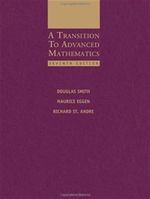CRN 24178
From Classes
(Difference between revisions)
HelmutKnaust (Talk | contribs) (→Homework (in-class)) |
HelmutKnaust (Talk | contribs) (→Homework (in-class)) |
||
| Line 47: | Line 47: | ||
*'''Open Problems:''' 1.3-6a,10c; 1.4-9c; 1.5-4b,5a,7a; 1.6-1ac,3,5a; 2.1-5ce,7,9,14bc,17ae,18 | *'''Open Problems:''' 1.3-6a,10c; 1.4-9c; 1.5-4b,5a,7a; 1.6-1ac,3,5a; 2.1-5ce,7,9,14bc,17ae,18 | ||
| + | *2/14: 2.2-6a,9acf,10c,11ab,12ab,18ab | ||
*2/7: 2.1-5ce,7,9,14bc,17ae,18 | *2/7: 2.1-5ce,7,9,14bc,17ae,18 | ||
*2/2: 1.5-4b,5a,6b,7a; 1.6-1ac,3,5ab | *2/2: 1.5-4b,5a,6b,7a; 1.6-1ac,3,5ab | ||
Revision as of 15:05, 14 February 2017
Syllabus
"Contrariwise," continued Tweedledee, "if it was so, it might be; and if it were so, it would be; but as it isn't, it ain't. That's logic."
Lewis Carroll
- Time and Place. TR 15:00-16:20 in LART 122
- Instructor. Helmut Knaust, Bell Hall 219, hknaust@utep.edu, 747-7002
- Office Hours. TR 13:30-14:50, or by appointment.
- Teaching Assistant. Ms. Delgado. Office hours MW 12:00-13:30 in MaRCS, LIBR 218.
- Textbook. D. Smith, M. Eggen, R. St. Andre. A Transition to Advanced Mathematics, 7th edition. Brooks/Cole.
- Prerequisites. The course requires a certain level of mathematical maturity that you should have gained by, for instance, having thoroughly and successfully grappled with the concept of infinity in your Calculus II course (which is the formal prerequisite for this course).
- Course Objectives. This is a Foundations course. This means that hardly any prior knowledge is required. The class prepares you "do" mathematics on your own and enables you take more advanced classes or read rigorous mathematical textbooks. You should expect (and I will expect) that you make considerable progress in the following areas:
- Make sense of an abstract definition by analyzing it carefully and constructing examples.
- Make sense of a mathematical statement and be able to bring to bear a variety of strategies for constructing its proof.
- Be able to recognize a rigorous proof when you read one. Conversely, be able to pick out the weak spot(s) in a less rigorous argument. Be able to fill in details in a sketchy proof.
- Once you have devised a proof, be able to write it down in a clear, concise manner using correct English and mathematical grammar.
- Be able to present and defend a proof to a group of your peers.
- Class Participation and Activities. Daily homework exercises will be presented by volunteers during the following class period. There may also be some in-class activities. Your participation will contribute 15% towards your grade.
- Homework. I will also regularly assign written homework. The homework will be graded (or presented by student volunteers), but will not contribute to your grade.
- Tests. Exams will be given on the following Thursdays: February 16, March 23, and April 20. Each exam counts 20% of your grade.
- Final Examination. The final exam on Thursday, May 11, 16:00-18:45, is comprehensive and mandatory. It counts 25% of your grade.
- Time Requirement. I expect that you spend an absolute minimum of six hours a week outside of class on reading the textbook, preparing for the next class, reviewing your class notes, and completing assignments. Not surprisingly, it has been my experience that there is a strong correlation between class grade and study time.
- Attendance. You are strongly encouraged to attend class.
- Drop Policy. The class schedule lists Thursday, March 30, as the last day to drop with an automatic "W". After the deadline, I can only drop you from the course with a grade of "F".
- Students with Disabilities. If you have a disability and need classroom accommodations, please contact The Center for Accommodations and Support Services (CASS) at 747-5148, or by email to cass@utep.edu, or visit their office located in UTEP Union East, Room 106. For additional information, please visit the CASS website at sa.utep.edu/cass.
- Academic Integrity. All students must abide by UTEP's academic integrity policies, see http://sa.utep.edu/osccr//student-conduct/ for details.
Homework (in-class)
- Open Problems: 1.3-6a,10c; 1.4-9c; 1.5-4b,5a,7a; 1.6-1ac,3,5a; 2.1-5ce,7,9,14bc,17ae,18
- 2/14: 2.2-6a,9acf,10c,11ab,12ab,18ab
- 2/7: 2.1-5ce,7,9,14bc,17ae,18
- 2/2: 1.5-4b,5a,6b,7a; 1.6-1ac,3,5ab
- 1/31: 1.4-5eg,7bi,9c
- 1/24: 1.3-1hl,2hl,4abc,6a,8eh,10cd
- 1/19: 1.1-1bc,2ae,3cf,6h,10b,11bc; 1.2-1adf,3a,6ac,7ce,10a,13abc
Written homework
Homework 2, due 2/14 | Homework 1, due 2/2
Materials
LSAMP Summer Research Academy | A simple proof that π is irrational, Bull AMS 53 (1947), 509. By Ivan Niven. | Why Cognitive Science Matters to Mathematics. By George Lakoff and Rafael E. Núñez
